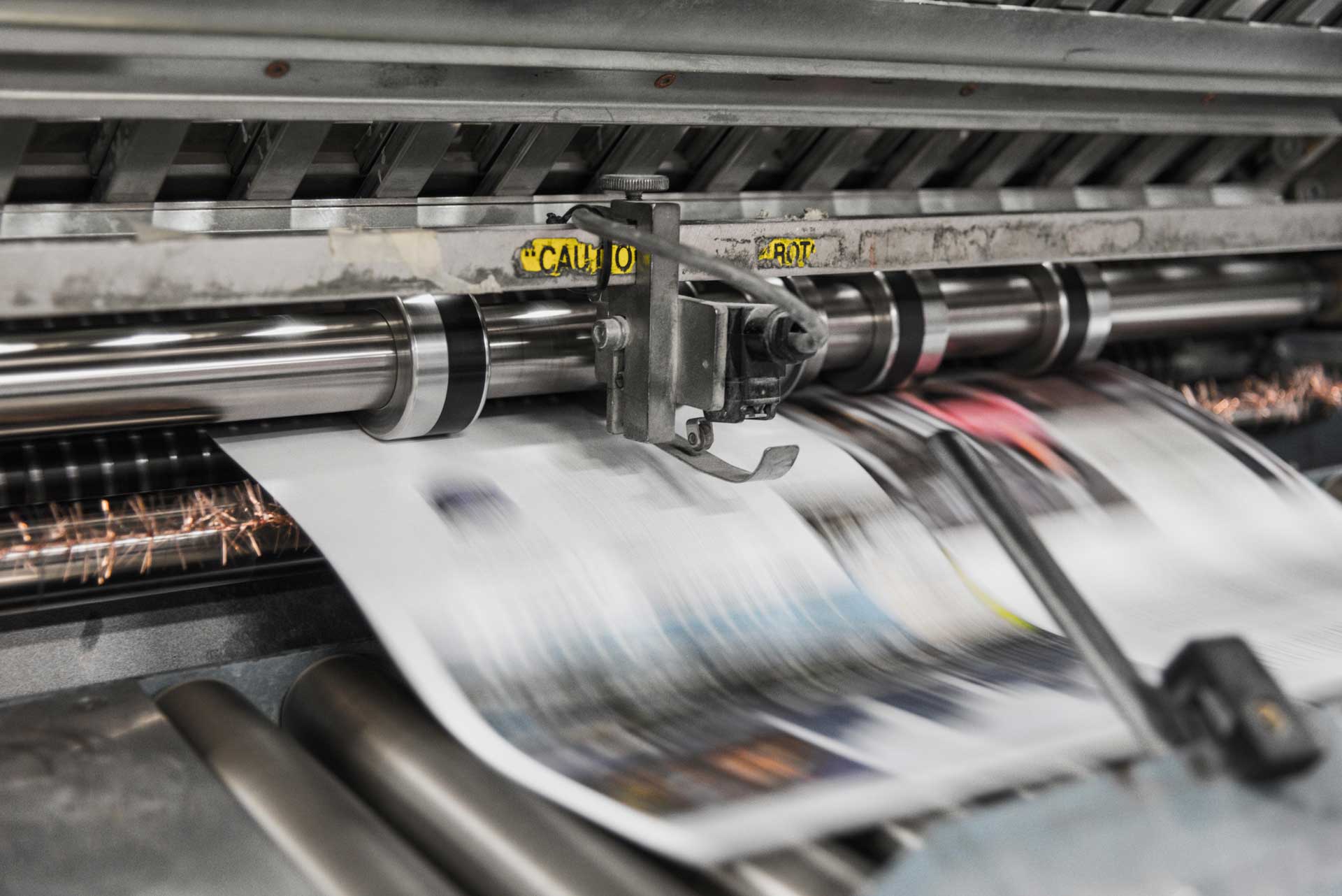The Importance of Typography in Graphic Design
Typography often gets overlooked but it’s very important in graphic design.
Though we may not consciously absorb each formatting choice, the right typography has an immense impact on how viewers experience and interpret the design.
The choice of fonts, sizes, kerning, line heights, etc. in typography all affect readability, hierarchy, mood, and flow for readers. Typographic decisions can bring unity and order when they align with the tone and goals of the overall design. On the other hand, haphazard typography can be distracting or confusing.
When typography harmonises with other design elements like colour palettes, photos, icons, and layouts, it creates a cohesive look and enhances the messaging.
But often it takes thoughtfulness and restraint to keep typographic choices simple. The most successful graphic design typography employs only one or two font families and establishes a clear visual hierarchy.
Expert typography maximises legibility while still allowing the design to stand out. It helps connect with an audience by complementing the voice and personality of the brand or communication. Though we absorb its effectiveness intuitively, deliberative typographic choices are crucial for polished, professional graphic design.
In this blog, we’ll explore what typography is, why it’s important, and the reasons why typography is important in graphic design.
So, let’s dive in.
What is Typography in Graphic Design?
Typography, in the context of graphic design, refers to the design and arrangement of typefaces, fonts, and visual elements to make the written language legible, readable, and appealing when displayed.
It is a design element that combines the aesthetic and functional aspects of text, creating a visual hierarchy, legibility, and overall visual appeal in graphic design.
Typography design includes font choice, typeface, font style, font size, leading value, letter spacing, line spacing, alignment, white space, and overall layout of text.

Why is Typography Important?
Typography is important in graphic design because it helps convey information, evoke emotions, and create visual interest. Good typography enhances the message, making it more engaging, legible, and memorable.
It guides the viewer’s attention, creating a visual hierarchy, and organising information effectively. Typography design also contributes to brand recognition, consistency, and the overall visual identity of a design.
The right choice of typography can make a design stand out, making it more impactful and successful. So, for brands, businesses, and individuals, we should never underestimate the power of typography.
7 Reasons Why Typography and Font Choice Are Important
Typography and font choice are important in graphic design for several reasons. Let’s explore a few of them:
1. Captures Attention
Typography design captures the viewer’s attention with the right fonts, size, spacing, and alignment. Bold, unique, or stylised typography stands out, making the message more memorable.
An attention-grabbing typography design can differentiate a design and make it more visually appealing. Creative typography can evoke curiosity, and intrigue, and encourage the viewer to engage with the design.
2. Increases Accessibility
Choosing the right typography design, font size, spacing, and line spacing, enhances the accessibility of the text. Clear, legible typography ensures readability for a wide range of audiences, including those with visual impairments.
Accessibility-friendly typography design considers factors like contrast, font choice, and spacing to enhance readability. Good typography design makes the text accessible, inclusive, and easy to comprehend for all users. Accessibility in typography design contributes to effective communication, information dissemination, and a positive user experience.
3. Making the Text Reader Friendly
Reader-friendly typography design focuses on legibility, readability, and overall visual appeal of the text. Choosing a font style, size, spacing, and alignment that make the text easy to read enhances the reader’s experience.
Adequate line spacing, letter spacing, and kerning improve the legibility of the text, preventing visual fatigue. Creating a visual hierarchy, using headers, subheadings, and body text, guides the reader through the text.
4. Establishing Hierarchy
Typography design plays a significant role in establishing a visual hierarchy in graphic design. By effectively using typography, graphic designers can guide the viewer’s attention, creating a visual hierarchy of information.
Font size, spacing, and alignment can be used to create a visual hierarchy, ensuring important information stands out. Different fonts and font styles can be employed to distinguish different levels of information, adding hierarchy.

5. Shows Personality
Typography design communicates the brand’s personality to the audience. Fonts with a bold, playful style reflect a brand’s dynamic and energetic personality, while classic serif fonts evoke a sense of tradition. Consistent typography design across different media reinforces the brand’s personality, helping the audience connect with the brand on a visual and emotional level.
Fonts have the power to evoke different emotions in the audience, playing a significant role in the overall design message. Serif fonts, for example, can create a sense of reliability and trustworthiness, while sans-serif fonts convey a clean, modern, and straightforward look. Cursive fonts, on the other hand, can add a touch of elegance, sophistication, and romance to a design.
6. Create Harmony and Consistency
Consistency in typography design is crucial in creating a cohesive and visually appealing graphic. It’s important to choose typefaces and font styles that complement each other, ensuring a harmonious look.
Maintaining consistent font sizes, line spacing, and letter spacing further enhances the overall design. Paying attention to the layout, alignment, and spacing of the text on a white background is essential to capture the viewer’s attention.
By incorporating these elements, you can create a seamless and visually pleasing experience for your audience.
7. Brand Recognition & Identity
Choosing fonts that match a brand’s personality and speak to its audience, while using those fonts consistently across materials, reinforces visual identity. Typography choices like font style, spacing, alignment, and text layout shape the tone and messaging of a brand.
As a powerful branding and communication tool, typography can elicit emotions from audiences, establish a recognisable voice, convey information clearly, and contribute to the overall look and feel of a brand when aligned thoughtfully with its goals and other design elements.
Legible, strategic typography design is thus essential for effective brand recognition, consistency, and communication of the brand vision.

How Do You Choose The Right Typeface For Your Website?
Choosing the right typeface for a website is important for overall design appeal, legibility, and message tone.
Here are a few important considerations when selecting a typeface for a website:
- Consider the target audience and the message the website wants to convey.
- Select a typeface that aligns with the website’s overall design style, brand personality, and target audience preferences.
- Pay attention to legibility, font size, line spacing, letter spacing, and overall layout of text for a good user experience.
- Test different typefaces to see how they look on different devices, browsers, and screen sizes.
- Look for a typeface that is versatile, easy to read, and matches the tone of the message the website wants to convey.
Choosing and Pairing Typefaces or Fonts
When choosing and pairing typefaces or fonts for graphic design, there are several factors to consider. Pairing serif and sans-serif fonts can create a good balance of readability and style.
It’s important to take into account font width, saturation, hue, and overall visual appeal when selecting and combining fonts. Typography design can be used to create visual interest and hierarchy within the design.
Experimenting with different font combinations is key to choosing fonts that complement each other. Graphic designers should consider the target audience, tone of the message, and overall layout of the design when selecting and pairing fonts.
Graphic Design Services From Image Box Design
Typography conveys brand personalities, establishes hierarchy, and boosts engagement. For brands, businesses, and creatives seeking to connect with audiences, typography creates cohesion between visuals and text.
At Image Box Design, we’re a creative UK design agency who have helped hundreds of businesses with their branding and marketing materials. Get in touch to find out how we can grow your business.
If you’d like a quote, call us on 0118 969 4000 or complete our online form and we’ll get in touch as soon as possible.
Frequently Asked Questions
What is typography and why is it important in graphic design?
Typography, in the context of graphic design, refers to the design and arrangement of typefaces, fonts, and visual elements to make the written language legible, readable, and appealing when displayed. Typography is important in graphic design because it enhances the overall visual appeal, legibility, message tone, brand recognition, visual hierarchy, and overall design effectiveness.
What is the impact of typography on graphic design?
The impact of typography on graphic design is significant. Typography choice, font style, size, spacing, alignment, leading value, letter spacing, line spacing, white space, and overall layout of text all contribute to the overall design message, visual hierarchy, legibility, brand recognition, and overall visual appeal of a design. Good typography design captures attention, conveys information effectively, enhances the overall design message, and differentiates a design from competitors.
Why is lettering important in graphic design?
Lettering, a significant aspect of typography design, is important in graphic design because it can convey a message, tone, style, brand personality, and overall design message. Good lettering enhances the overall visual appeal, legibility, message tone, brand recognition, visual hierarchy, and overall design effectiveness of a graphic design project.
What are the important points of typography?
The important points of typography design include font choice, typeface, font style, font size, leading value, letter spacing, line spacing, alignment, white space, overall layout of text, visual hierarchy, legibility, brand recognition, message tone, overall design appeal, and overall design message effectiveness. Good typography design captures attention, guides the viewer’s attention, communicates information effectively, differentiates a design, and enhances the overall visual appeal of a design.
What is a Typeface?
A typeface refers to a set of fonts that share an overall design. For instance, Times New Roman is a typeface that includes fonts like regular Times New Roman, Times New Roman Bold, Times New Roman Italic, and Times New Roman Bold Italic. On the other hand, a font is a specific style variation within a typeface family, like italic or bold. So while Times New Roman is a typeface, Times New Roman Italic is a specific font within that typeface. Other common typeface examples include Arial, Helvetica, and Courier. Each contains its own set of font styles, like bold or italic versions. Knowing the difference between a full typeface and individual fonts allows for more precise typography choices.
Related Design Guides:
- What is Graphic Illustration?
- What Makes a Great Poster Design?
- What Makes Effective Packaging Design?
- 12 Advantages of Print Advertising
- How to Design a Poster
- What is Branded Merchandise?
- What is Graphic Design?
- What is an Infographic?
- What is Logo Design?
- 10 Signs Your Business Needs a Rebrand
- How to Make a Magazine
- 15 Tips For Choosing The Best Graphic Design Company
- 17+ Reasons Why Graphic Design is Important for Businesses



